The roof of the house has always deserved special attention. Along with the walls, it has a protecting function and is designed to protect the house from adverse weather conditions. For this reason, the roof device of a wooden house deserves special attention. It is designed not only to protect the house from heavy rain and heavy snow cover, but also to withstand the heat of the scorching sun and the force of gusty wind. We can say that this construction of the house is constantly tested for strength, stability, various kinds of insulation. Roofing materials for roof covering must be frost-resistant and resistant to chemical and radiation exposure. In this article we will talk about what should be the design of the roof of a wooden house, which will meet all the requirements of a reliable shelter.
Content
Wooden roof - basic concepts
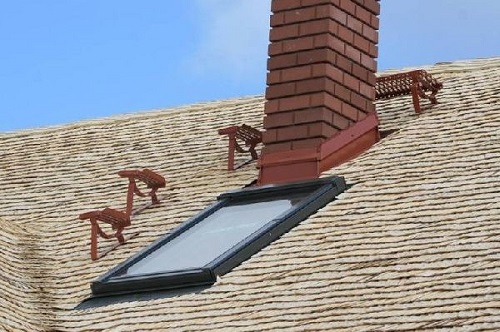
The roof is a structural element of the house, located above the attic floor and made of beams, which can be wooden or concrete. The roof topcoat is made of different materials - slate, corrugated board, metal tile, soft bituminous tiles, etc. All this together is designed to protect the building and guarantee a cozy and comfortable living for people.
By choosing and constructing the roof correctly, you can not only not worry about its strength, but also admire the attractive appearance, which in each case is distinguished by its special color and charm.
Roofs differ not only in roofing materials, but in a geometric shape, which is determined by the angle of inclination of the roof relative to the horizon. It can be flat with an angle of inclination of up to 5 degrees and pitched with a significant slope.

In describing the slope, notation is used, both in degrees and in percentage terms (the elevation height H is divided by half the span to be covered and multiplied by 100%).
Features of a pitched wooden roof
The device of a wooden roof will depend on its design features.
A pitched roof is a roof consisting of slopes (the so-called inclined planes of the roof, which have a slope of more than 10%). Depending on the design, the roofs are divided into attic (separate) and unmerciful (combined). Attic roofs have an additional non-residential premises (attic) located between the attic floor and the roof itself. The roof of the roof does not have such a room - in it, the overlapping of the upper floor is at the same time a load-bearing element of the roof.
The roof consists of a supporting skeleton of the roof (it perceives the loads from it and the underlying rainfall) and the roof in the form of a facing material that protects the house from external influences. Due to the slope, precipitation flows or slides from the roof. As described above, it is defined as a percentage or degree.
What will be the slope of the roof, determined by many factors:
- According to the size of snow cover characteristic for this climate region. It differs significantly in the northern and southern regions, the European or western part of the country. A greater slope of the roof contributes to an easier snow melting, which means that in this case the roof will not be overloaded and will last longer.
- According to the material of the roofing. Depending on its type, there may be a different slope of the roof.
- According to the architectural features of the building. It is the roof that will often determine the architecture of the building.For example, in the case when the customer asks for the use of ceramic tiles as the topcoat for the installation of a flat roof, the architect will need to either convince him that in this case it is impractical to do this, or change the shape of the roof. Then it will be possible to use the roofing material proposed by the customer.
Types of pitched roofs
Pitched wooden roofs, the designs of which are currently very diverse, are:
Pitched. The roof in this case has one slope - from one wall to another. They are used in buildings located within the city, but do not have permission to drain and place drainpipes, as well as dumping snow. Shed roofs are arranged on the simplest constructions such as garages and sheds.
Gable or forceps. They are used in buildings of various types and are considered the most common. Represent two slopes directed in opposite directions.
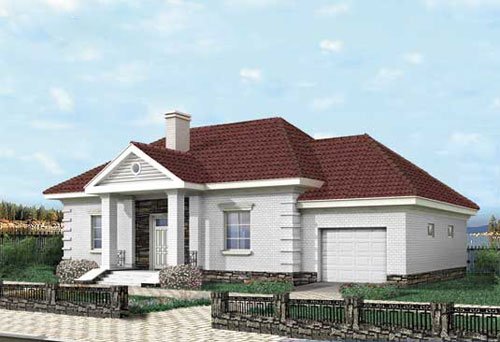
Hip and Hip (two or four-slope), used mainly in country houses and rural construction. Provide for dormers.
Attic or broken. They are arranged above residential premises in order to obtain additional living space or attic space for household needs.
Hipped Four-Slope, when the tops of all the slopes are connected at one point. Such roofs are used in buildings with a square or polygonal plan.
Spire-shaped, consisting of very steep slopes of a triangular shape that connect at the top. They overlap such architectural elements of buildings as towers, bay windows, round-shaped wall structures.
Attic pitched roofs and their design features
The choice of roof structure is determined by several factors, namely:
The amount of overlapping spans. The size of the cross section of the rafter leg directly depends on the size of the span to be blocked. The larger it is, the greater the load on the rafter leg. For example, to cover a single-pitched roof of a building with a span of 5 meters, it is enough rafters with a pitch of 1 to 1.2 meters and a section of 150x50 mm. If the wooden roof structures are designed for a 10 meter span, then 2 boards of the same section with a rafter step of 0.6 meters will be required. A glued beam having a height within 30 cm may be used.
The slope of the roof of the house. It should be borne in mind that the snow that falls on the roof with a slope of up to 50 degrees will crawl down under the weight of its weight. This means that the load on the roof structure will be the smallest, and this is the opportunity to use rafters of a smaller section for it. When a flat roof is made with a slope within 20 degrees, then the rafters should be more powerful, since they will have to take the load from the snow accumulating on the roof.
Design life requirements. Ideally, the durability of the roof should coincide with the service life of the building itself (in the case of cottages and private houses, this is approximately 100 years). If the roof is properly maintained and carefully maintained, then the wooden structure can last 20-30 years without major repairs, metal and reinforced concrete 30-50 years. Although there are examples suggesting that under conditions of proper operation, wooden roofs have served for more than one hundred years.
Fireproof roof construction. Fire resistance requirements are very important and are of great importance when installing the roof and rafter system. For example, in low-rise buildings (1-2 floors), the wooden structures of the attic roof must retain their integrity and bearing capacity when exposed to open fire for 45 minutes. This limit of fire resistance can be achieved using the optimal cross-section of the rafters and their high-quality fire protection (this includes protective paints, flame retardants, non-combustible mats, cement-sand plaster).
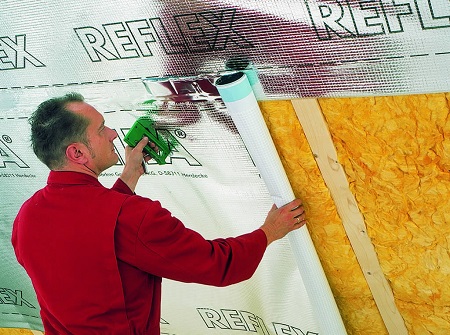
The technological properties of the roof. If you need a warm roof, it will weigh more and, accordingly, wooden roof structures will have a larger section and the weight of the constituent elements. For example, mineral wool boards 100 mm thick weigh from 16 to 50 kg / sq.m. At the same time, a foam of the same thickness will weigh 6-12 kg / sq.m. In the case of a warm ceiling, the weight of the insulation will put pressure on the rafters and therefore its weight must be included in the calculation of their power. With a cold ceiling, the action of the insulation will be transferred to the attic floor, and the load on the rafter system will be reduced.
Various wooden roof designs
When it comes to low-rise construction, the most popular are wooden structures. In most cases, they use three of their types:
- rafters;
- hanging rafters;
- wooden farms.
The rafter system includes:
- rafters or rafters. This name is given to wooden beams that directly perceive the load of the roof;
- Mauerlat the so-called beam, which is laid along the wall and which serves as a support for the rafters;
- racks in the form of wooden vertical beams;
- screeds which perceive the tensile forces of the roof;
- crate which is a set of bars that are laid in the perpendicular direction on the rafter legs.
Let us dwell on each component separately.
Head rafters arranged so that their lower end rests on the Mauerlat, and the second upper end - on the rack or wall of the house. The function of Mauerlat is reduced to the transfer and distribution of the load coming from the rafters to the wall. Rafters have a pitch of 0.6-2.0 meters. It is influenced by the load, type and grade of the tree from which they are made. The material for the rafters is a bar with a thickness of 150-200 mm or composite boards having a thickness in excess of 50 mm. Racks are placed in increments of 2-3 meters. To make the roof truss structure of the wooden house more rigid, horizontal ties are made between the racks from the beam with a width of 150-200 mm. The rafter system is attached to the house, otherwise it can be demolished by the wind. For this purpose, a wire (twist) is used, which is mounted in the wall with the help of anchors.
A rafter system of this kind is the most common. It attracts with a convenient scheme, which can always be changed, given the configuration of the house.

For the installation of the rafter system, it is necessary to have one or more longitudinally located load-bearing walls on which the racks rest. The width of the house should be at least 7 meters.
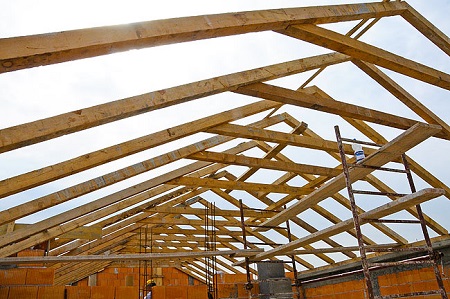
Hanging rafter systems used in buildings in which there is no load-bearing wall located in the middle of the building and on which the roof can rest. In this case, the width of the house is 6-8 meters. With the help of such rafters, it is possible to block not very large outbuildings. In this scheme, the lower ends of the rafters without any intermediate supports rest directly on the side walls. In this case, large horizontal stresses appear on the walls. The rigidity of the structure in this case is ensured by ensuring the screed (tightening) of the rafters, which reduces the spacer forces and protects the exterior walls from tipping over. All wooden structures are fastened with the help of linings, nigels (nails) and bolts.

If you want to operate the attic, the screeds should be at a height. Please note that the higher they are located, the more massive they should be.
Wooden trusses most often used in roofing in industrial construction and less common in private. The reason lies in their large spans - 15-20 meters. The structural structure of a farm made of glued wooden boards or beams is rather complicated.The nodes of the wooden roofs in this case represent an unchanged system, which includes separate, interconnected elements (boards and boards with a cross section of 50-150 cm). The use of such structures is carried out on buildings that have been used since the last century and their roofing systems must be replaced. They do it in theaters, public buildings and houses of the "Stalinist" construction. Wooden trusses cover one- and two-story agricultural buildings under construction for the preservation of the harvest. In private construction, the use of such structures is economically unjustified, since the cottages do not have large 20-meter spans. For them, the rafter is quite suitable systembased on 2-3 longitudinal walls.

In the construction of the so-called "Canadian houses", which are completely built from wood according to standard designs, farms are very popular.
In the end, it should be noted that among the positive aspects of roof structures made of wood is their durability (it is only necessary to protect them and operate correctly), as well as the relative cheapness and naturalness of the material. Among the disadvantages can be called their flammability, which can occur without proper protection, the possibility of rotting and damage caused by parasites.

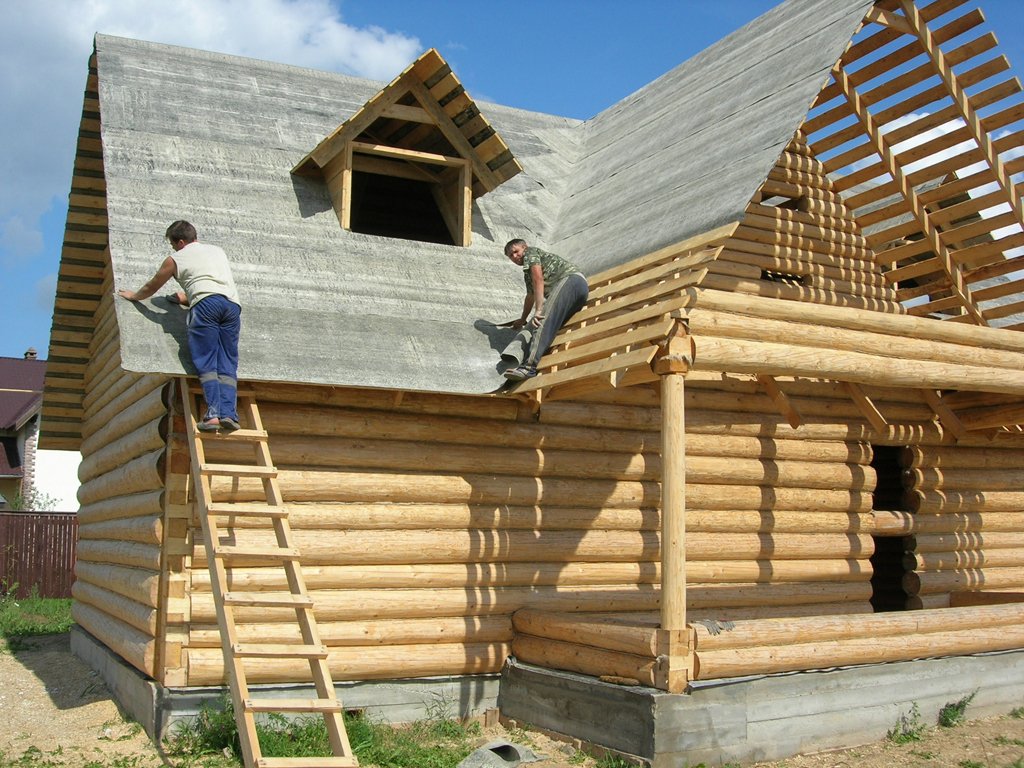



Alas, no comments yet. Be the first!